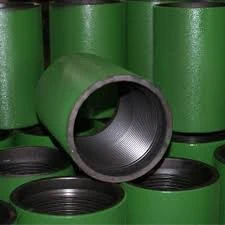- Afrikaans
- Albanian
- Amharic
- Arabic
- Armenian
- Azerbaijani
- Basque
- Belarusian
- Bengali
- Bosnian
- Bulgarian
- Catalan
- Cebuano
- Corsican
- Croatian
- Czech
- Danish
- Dutch
- English
- Esperanto
- Estonian
- Finnish
- French
- Frisian
- Galician
- Georgian
- German
- Greek
- Gujarati
- Haitian Creole
- hausa
- hawaiian
- Hebrew
- Hindi
- Miao
- Hungarian
- Icelandic
- igbo
- Indonesian
- irish
- Italian
- Japanese
- Javanese
- Kannada
- kazakh
- Khmer
- Rwandese
- Korean
- Kurdish
- Kyrgyz
- Lao
- Latin
- Latvian
- Lithuanian
- Luxembourgish
- Macedonian
- Malgashi
- Malay
- Malayalam
- Maltese
- Maori
- Marathi
- Mongolian
- Myanmar
- Nepali
- Norwegian
- Norwegian
- Occitan
- Pashto
- Persian
- Polish
- Portuguese
- Punjabi
- Romanian
- Russian
- Samoan
- Scottish Gaelic
- Serbian
- Sesotho
- Shona
- Sindhi
- Sinhala
- Slovak
- Slovenian
- Somali
- Spanish
- Sundanese
- Swahili
- Swedish
- Tagalog
- Tajik
- Tamil
- Tatar
- Telugu
- Thai
- Turkish
- Turkmen
- Ukrainian
- Urdu
- Uighur
- Uzbek
- Vietnamese
- Welsh
- Bantu
- Yiddish
- Yoruba
- Zulu
Optimizing Tubing Connections for Enhanced Performance and Reliability in Engineering Applications
Understanding Coupling for Tubing A Comprehensive Overview
In the realm of oil and gas exploration, the efficiency of extraction processes hinges significantly on the integrity of the equipment used. One crucial component in this equation is the coupling for tubing, which plays a vital role in ensuring a seamless connection between adjacent sections of tubulars within a well. This article explores the importance, types, and best practices associated with couplings for tubing, highlighting their impact on performance and safety.
What is Tubing Coupling?
Tubing couplings are specialized fittings that connect segments of tubing in drilling applications. Tubing itself serves to transport fluids from deep within the well to the surface, and the couplings ensure that these pipes remain securely linked, thereby maintaining structural integrity under varying pressure and temperature conditions encountered in subsurface environments.
Importance of Couplings in Well Integrity
The integrity of a well is paramount for successful hydrocarbon extraction. Couplings serve multiple functions they facilitate the transfer of hydraulic pressure, prevent leaks, and withstand the forces exerted by various geological formations. A failure in a coupling can lead to operational downtime, environmental hazards, and significant financial repercussions. Therefore, understanding the types and characteristics of couplings is essential for engineers and operators.
Types of Couplings
There are several types of tubular couplings, each tailored for specific applications and conditions
1. Threaded Couplings This is the most common type. They are designed with male and female threads that screw together. The tightness of the threaded connection is crucial; if not properly installed, it can lead to fluid leaks and compromised well integrity.
2. Welded Couplings These couplings involve welding two segments of tubing together. While they offer robust strength and resistance to pulling forces, they are less commonly used due to the complexities involved in the welding process, especially in the field.
coupling for tubing

3. Slip-on Couplings These are designed to slip over the ends of two pieces of tubing and are often secured using bolts or clamps. They are easier to install but may not provide as secure a connection as threaded or welded couplings.
4. API Couplings Adhering to standards set by the American Petroleum Institute (API), these couplings ensure compatibility and reliability across various tubing sizes and depths. API couplings are recognized for their quality and are preferred for critical applications.
Best Practices for Installing Couplings
To ensure the longevity and reliability of tubing couplings, operators should adhere to best practices during installation
1. Inspection Before installation, each coupling should be inspected for defects, such as cracks or deformities, that could compromise their performance.
2. Proper Torque Application When thread connections are involved, applying the correct torque is essential to avoid cross-threading or under-tightening, which can lead to leaks.
3. Use of Appropriate Sealants In some cases, adding sealants can aid in preventing leaks, particularly in threaded connections. However, it’s critical to ensure that sealants are compatible with the fluids being transported.
4. Routine Inspections Regular inspections during the operation of the well can help identify potential issues with couplings early, allowing for timely maintenance or replacements.
Conclusion
In summary, couplings for tubing are critical components in the oil and gas industry, facilitating the safe and efficient transportation of fluids from the subsurface to the surface. Understanding the various types of couplings and adhering to best practices in their installation and maintenance can significantly enhance well integrity and operational efficiency. As the industry continues to evolve, so will the technologies surrounding tubing couplings, promising even greater reliability and performance in the years to come.
-
Tubing Pup Joints: Essential Components for Oil and Gas OperationsNewsJul.10,2025
-
Pup Joints: Essential Components for Reliable Drilling OperationsNewsJul.10,2025
-
Pipe Couplings: Connecting Your World EfficientlyNewsJul.10,2025
-
Mastering Oilfield Operations with Quality Tubing and CasingNewsJul.10,2025
-
High-Quality Casing Couplings for Every NeedNewsJul.10,2025
-
Boost Your Drilling Efficiency with Premium Crossover Tools & Seating NipplesNewsJul.10,2025







